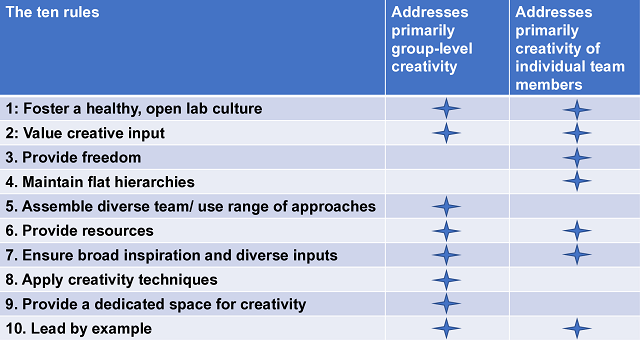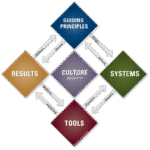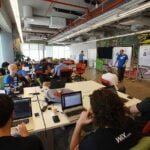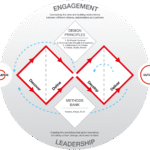
Research laboratories are the heart of scientific innovation, serving as hubs for both groundbreaking discoveries and the education of the next generation of researchers. However, in an era where the disruptive nature of research appears to be declining, fostering creativity within these laboratories has never been more critical.
Researcher Matthias C. Rillig from Freie Universität Berlin published an article outlining 10 practical rules to enhance creativity in research laboratories. These rules are designed to help principal investigators (PIs) and early-career researchers cultivate a laboratory environment that fosters creativity at both the group and individual levels. While the focus is on biology and ecology, these principles can be adapted to other scientific disciplines and institutional settings.
According to the article published in PLOS Computational Biology, the ten rules for promoting creativity in research laboratories can be detailed as follows:
Foster a Healthy and Open Lab Culture
This is the most important rule. The laboratory should be a place where everyone feels safe and comfortable sharing their ideas, both in meetings and daily activities. A healthy environment prioritizes members’ well-being, teamwork, trust, and professional development, fostering collaboration and respectful communication. A positive social climate is essential for creativity since people are less likely to share their ideas in toxic environments.
Value Creative Contributions
Recognition should come from both the PI and peers. People should be acknowledged for their contributions, their ideas should be valued, and they should be rewarded—for example, by being included as co-authors on papers. It is crucial to appreciate ideas, as they are not merely “easy to come by.”
Provide Freedom
Lab members should have the freedom to explore other topics and pursue their interests once they have fulfilled their primary responsibilities. This rule is based on the idea that freedom can stimulate creativity. Maintaining constant communication is essential to ensure that primary duties are met.
Maintain Horizontal Hierarchies
Strong hierarchies can inhibit the expression of creative ideas. A lab environment should encourage team members to feel comfortable expressing their opinions, even if they contradict the PI. While hierarchical structures can help define roles and objectives, they should not hinder the flow of ideas.
Assemble a Diverse Team with a Variety of Approaches
Diversity within a team can generate new connections and ideas. This diversity can be reflected in terms of background, culture, gender, life experiences, and scientific training. A diverse team can tackle a wide range of research questions using different approaches, including theoretical, experimental, and observational methods. However, it is important to manage diversity effectively, as it can also lead to conflicts.
Provide Resources
Financial resources are crucial for materializing new ideas. They enable lab members to conduct exploratory experiments and receive specialized training. It is essential to secure financial reserves for this purpose.
Ensure Broad Inspiration and Diverse Inputs
This can be achieved by reading articles outside the lab’s specific research field, inviting people with broad interests, or organizing interdisciplinary workshops. Hosting resident artists or philosophers and inviting researchers from other disciplines can also provide new perspectives.
Apply Creativity Techniques
There are many techniques to enhance creativity, such as brainstorming, brainwriting, the Six Thinking Hats, the Zwicky Box, and the SCAMPER technique. These methods can be used in lab meetings or workshops.
Provide a Dedicated Space for Creativity
A portion of lab meetings or workshops can be dedicated to discussing creative ideas. A physical or online suggestion box can also be created for submitting ideas anonymously. The key is to make creativity an integral part of the routine.
Lead by Example
The PI or senior group members should demonstrate their interest in developing unconventional ideas and learning about creativity. This can be done by sharing their thoughts, participating in creative activities, or showing curiosity about how creative ideas emerge.
Conclusion
Creativity is not a fixed trait but a skill that can be nurtured through the right environment and practices. By implementing these 10 rules, research laboratories can become more innovative and productive, ultimately contributing to solving the world’s most pressing challenges in biology, ecology, and beyond.
Whether you are a principal investigator or an early-career researcher, fostering creativity in your lab is a shared responsibility that requires commitment, collaboration, and a willingness to embrace the unknown.
Reference (open access)
Rillig MC (2025) Ten simple rules for fostering creativity in research labs. PLoS Comput Biol 21(2): e1012788. https://doi.org/10.1371/journal.pcbi.1012788
Editor and founder of “Innovar o Morir” (‘Innovate or Die’). Milthon holds a Master’s degree in Science and Innovation Management from the Polytechnic University of Valencia, with postgraduate diplomas in Business Innovation (UPV) and Market-Oriented Innovation Management (UPCH-Universitat Leipzig). He has practical experience in innovation management, having led the Fisheries Innovation Unit of the National Program for Innovation in Fisheries and Aquaculture (PNIPA) and worked as a consultant on open innovation diagnostics and technology watch. He firmly believes in the power of innovation and creativity as drivers of change and development.





